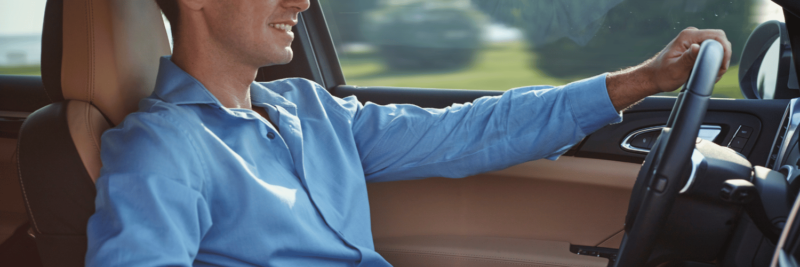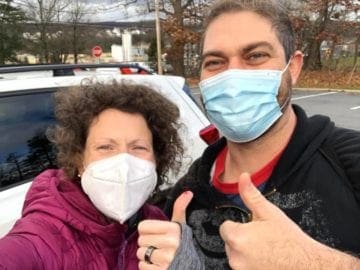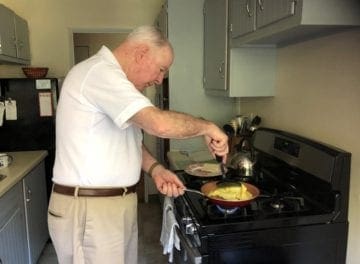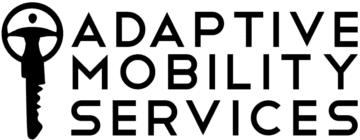
Driving After a Stroke
For many people, driving is an essential aspect of their independence – not just a benefit. However, an individual’s capacity to drive may be significantly impacted after experiencing a stroke. Understanding these challenges and looking for available solutions can help many stroke survivors regain their independence on the road.
How Does A Stroke Impact Ability To Drive?
A stroke can affect a number of visual, cognitive and physical abilities necessary for safe driving. The effects of a stroke can differ greatly among survivors, ranging from decreased motor abilities to issues with spatial awareness. With the right assistance and rehabilitation, a large percentage of stroke survivors may return to driving on their own.
Adaptive Equipment for Stroke Survivors
Adaptive equipment provides many stroke survivors with an opportunity to return to driving. The specialized equipment can improve an individual’s driving ability and make up for physical limitations. For example, controlled steering can be done with one hand by utilizing a spinner knob that attaches to the steering wheel. This is especially useful for stroke survivors who may have limited use of one side of their body.
Additional types of adaptive equipment can be used if an individual is unable to use their right foot for the gas and brake pedals. To enable safe driving, these survivors may benefit from a type of equipment called a left-foot accelerator. It is important to note that adaptive equipment must be prescribed to an individual – it cannot be purchased without a recommendation from a healthcare professional. An Occupational Therapy Driver Rehabilitation Specialist (OT DRS) can help you with this process!
Comprehensive Driving Assessments After Stroke
If you or a loved one have experienced a stroke, it is recommended that you contact an OT DRS for a comprehensive driving assessment. These professionals will be able to assess your fitness to drive by examining your cognitive, perceptual and physical abilities related to driving, and by conducting an on-the-road assessment. After your assessment is completed, the OT DRS will be able to offer guidance for interventions, which may include prescribing adaptive equipment to the stroke survivor. This will allow you or a loved one to safely and independently drive again.
To ensure your safety and confidence when driving with new adaptive equipment, it is important to obtain training with a professional who is familiar with the tool(s). At Adaptive Mobility, we are OT driver rehabilitation specialists that offer comprehensive driving assessments and driver training to help our clients regain their driving freedom. If you or a loved one have experienced a stroke and are ready to start driving again, check out our driver rehab services!
Recognize The Signs of Decline In Driving Ability
After experiencing a stroke, it’s important for survivors and their loved ones to be aware of the warning signs that may indicate a decline in driving fitness. Some key indicators include:
- Frequent Accidents or Near Misses: Any recent incidents on the road that have risked the safety of the driver and/or other drivers.
- Hitting Both Pedals: Accidentally hitting both the gas and brake pedals at the same time while driving.
- Inappropriate Driving Speeds: Driving too fast or too slow for the area and traffic conditions.
- Drifting Across Lanes: Difficulty staying in one lane while driving.
- Poor Decision-Making: Slow reaction time to changes in traffic conditions, difficulty with judging distances (including depth perception), or getting too close to the vehicle in front of or beside them.
If these signs are observed in your driving habits or the habits of a loved one, it may be time to reach out to an OT DRS for a comprehensive driving evaluation.
Every 40 Seconds Someone in the United States Has A Stroke
Stroke is a leading cause of serious long-term disability. Stroke reduces mobility in more than half of stroke survivors. It can change the way we see, move, taste, think, and more. Therefore, it is important to see a driving specialist and have a comprehensive driving evaluation after a stroke.
The good news is that many are able to return to driving after a stroke!
Partnering with an occupational therapist with specialized training in driver rehab, like Susie Touchinsky, is a great way to help know if you can return to driving after a stroke!
Stroke Recovery Includes Occupational Therapy to Learn to Drive Again
A stroke doesn’t have to keep you from behind the wheel. Stroke recovery includes Occupational Therapy to learn to drive again.
For over a year after his stroke, my client regularly went to physical, speech, and occupational therapists to help him recover from his stroke. Finally, he went home in a wheelchair and lived his life well doing everything except driving.
Then, after visiting with an adaptive equipment specialist, he was referred to me.
During all of his therapy, not a single person had told him that he could drive again. They were focused on their specific areas of recovery, and he had never mentioned that he was missing driving.
Now, with a simple piece of equipment and some training, he has regained his ability to drive again.
When asked what the first place he drove to was, he said, “I went to get my wife a birthday card from Hallmark.”
Driving Rehab is just one unique area of Occupational Therapy. But, there are so many others.
Driving Post Stroke With A Left Foot Accelerator

Michael returns to driving post stroke using a left foot accelerator.
Michael has returned to driving post-stroke with a left foot accelerator!
Please join me in congratulating Michael on passing his adaptive equipment driving test on a very cold and windy Tuesday!
Michael is a young, very independent, hard-working father. About a month into the pandemic, he woke up, alone in his home, unable to move the right side of his body. He had suffered a stroke & needed help immediately. At that moment, he remembers feeling extremely hopeless and helpless.
View Our Video On Driving With A Left Foot Accelerator
Imagine Being Able To Drive Again After A Stroke
I can’t even begin to imagine what that must of felt like.
With gratitude, Michael speaks of the many following months that he spent focused on his recovery. He told me he’s so grateful to the occupational therapist who mentioned driving and finding a specialist to learn to drive with a left foot accelerator. (The left foot accelerator is a piece of adaptive driving equipment prescribed by an OT Driver Rehabilitation Specialist. Learn More about the left foot accelerator below). These OTs gave him THE HOPE & motivation he needed to regain his independence.
When I met Michael, he was six months post-stroke and ready to consider driving. He was living at his parents’ home and working to adapt his own home while he finished his last piece of recovery—driving.
With his right leg and arm out of commission, we began exploring a left foot accelerator & spinner knob options. He quickly picked up how to use this equipment and became proficient.
Today, I’m beyond excited to share that yesterday, he passed his Pennsylvania medical driver’s test with flying colors, and TODAY, he is moving back into his home.
Hear about Michael in the video below at 9:29.
After Passing Medical Driver’s Test Post Stroke
As we sat in the PennDOT lobby, waiting for the restrictions to be applied to his license, I asked Michael which was better? Passing his test as a teenager for the first time or passing his test today. He paused, and then with the biggest smile and a tear in his eye said,
“Today. Today means so much more.”
It means absolute independence again.
It means autonomy.
It means being a dad in every way he wants to be.
Simply put, “Being able to drive means everything.”
Understanding The Left Foot Accelerator

The left foot accelerator requires training with a driver rehabilitation specialist.
Left foot accelerators (like the one pictured here) are a piece of adaptive driving equipment prescribed by an OT driver rehabilitation specialist. It is the role of the OT-DRS to complete a comprehensive driving evaluation, help determine potential equipment options, provide evaluation & training for the equipment, & then write a prescription for the equipment. The OT-DRS then helps the client connect with a skilled adaptive equipment installer. You can find a list of these installers at NMEDA. Please note, purchasing adaptive equipment off of the internet is not recommended. Adaptive driving equipment needs to be selected to meet the individual driver’s needs and installed in the specific vehicle. This is important for safety and liability. These specialists are trained at finding the best solution for the driver and their vehicle.
Personal Experience With Driving After A Stroke
This week, I worked with a client whose stroke left him with expressive aphasia. While he was able to easily understand what was said to him, at times, he had trouble finding the words to answer questions and even express himself.
Can you imagine how frustrating this is?
He had recovered well in all other areas – was able to walk, had returned to exercise, had returned to work and managing his home & yard – but he had one more thing he wanted to regain – he wanted to return to driving!
His family & even some of his medical team were skeptical. How would someone who had difficulty expressing himself do with driving? He hadn’t done well on many of the cognitive tests and there were concerns.
Completing Driving Evaluation After A Stroke
He decided to complete a comprehensive driving evaluation with me. Through his evaluation, I began to realize his poor performance on the language based cognitive tests, was most likely related to his aphasia, and not due to his cognition. So instead of proceeding with more question & answer testing, I put on my OT hat and first asked him to do a few functional tasks in the home, and then progressed him into the driving rehab car.
In the car he did beautifully. He demonstrated a strong pattern of safe driving behaviors and even responded quickly to an unforeseen hazard.
At the end, he was so grateful that he had been given the chance to be evaluated and return to driving. He expressed that even he had had doubts about his ability to return to driving.
Struggling With Communication After A Stroke

Patrick returns to driving after a stroke.
I’d like you to meet Patrick. He is a stroke survivor. After a stroke stole his ability to express himself, many counted him out. Too often we associate language with ability and when a client loses expressive communication it can be tough for experts and families to understand what is working and what is damaged.
This is when I love to turn to my roots as an occupational therapist. When it is hard for a client to speak or communicate, paper and pencil tests need to replaced with something better.
The Value Of An OT DRS With Stroke Survivors
Having an Occupational Therapist Driver Rehabilitation Specialist is so valuable to post stroke driving.
Occupational therapists are experts in watching human behavior and understanding a client’s skill. We have a special test called the Assessment of Motor & Process Skills (AMPS). This test requires advanced training, calibration, and certification, but let me tell you, it is worth it!
I can have my clients complete the AMPS by doing simple, everyday activities like cooking or cleaning. There’s growing research connecting AMPS performance to driving (Dickerson et al, 2011). So much so, that when Patrick made me the most beautiful omelet, I gained great confidence in him and his skills and knew it was time for his on-the-road driving evaluation.
Patrick completed his driving evaluation and did a phenomenal job! He demonstrated fitness to drive and has returned to driving after his stroke!
Preparing Tools For Communicating After A Stroke
To help stave off any concerns that may arise from his difficulty to express himself, we created an identification card that he placed with his driver’s license and car insurance. This card stated his medical condition, how it impacted his language, and included emergency contact information, so if ever needed, it was right there.
Strokes can affect a wide range of skills and abilities. Working with an occupational therapy driver rehabilitation specialist after a stroke can be a great way to determine when you are ready to return to driving and if any additional help is needed.
Confidently Return To Driving After A Stroke
Although it may seem intimidating to drive after a stroke, many stroke survivors are able to regain their independence behind the wheel with the right support, guidance, and resources. Individuals can ensure that they maintain safe driving habits for as long as possible by recognizing the warning signs and obtaining professional help when necessary.
At Adaptive Mobility, we are committed to helping stroke survivors on their path to recovery and independence. If you or a loved one has suffered a stroke and is having trouble driving, reach out to us today. With a national directory of occupational therapy driver rehabilitation specialists, we are prepared to help you or a loved one pave the way for safer driving.
Resources & References:
- Dickerson, A. E., Reistetter, T., Schold Davis, E., & Monahan, M. (2011). Evaluating driving as a valued instrumental activity
of daily living. American Journal of Occupational Therapy, 65, 64–75. doi: 10.5014/ajot.2011.09052
Video Transcript:
DCM Case Study Stroke Recovery Includes Driving Through Occupational Therapy – YouTube
Transcript:
(00:05) Somebody I recently saw called me last spring, and when he called me, you know, we met on the phone, and he said to me I’ve been looking for you I’ve been looking for you for three years, so he had a stroke and it impacted his right side and he worked hard on recovery he had occupational physical therapy speech therapy for over a year’s time and he was discharged home you know at a wheelchair level he was able to transfer and do things for himself he went back to doing the taxes he went back to cooking, but he never got back to driving and
(00:41) what was interesting about this case is nobody even talked to him about driving right; they talked about all the other areas of his life, but they didn’t talk about driving so this gentleman started thinking about what technology can do, and he did a little research and found that there was equipment to help compensate for him not being able to use his right side of his body and in looking at that equipment he met an equipment vendor who said well you really need to talk to Susie you need to talk to an OT driving rehab specialist first to find out
(01:14) If this equipment is right for you, he called me up, and we went through the process and the evaluation. We also did training for adaptive equipment. His solution is pretty straightforward: it’s a piece of equipment that can go into the car, and with, you know, several training sessions, he was passing his driver’s test, including the parallel parking, and he was back on the road, and he’s one of these guys that he told me you know I’m so glad I found you I love my wife she’s been incredible to me we’ve moved.
(01:47) to a new house, he said, but I need to get out. I needed to go on my own, so after he got his equipment, I asked him, ” Well, where did you go? Where’s the first place you went? He told me that he went to buy his wife a birthday present and that, you know, that’s everything, right? Just to be able to do that on your own at the drop of the hat, that’s everything, and he hadn’t done that for three years.
Meet Susie!

Susie Touchinsky, OTR/L, SCDCM, CDRS, is an established expert in both occupational therapy and driver rehabilitation. She has been an OT for more than 20 years and brings expertise and a love for helping others in her speeches and trainings.
Learn More With Our OT Driver Rehabilitation Specialist Courses
Try Our Free OT DRS Courses:
- OTs Role With Driving
- GRID: Generalist Resource to Integrate Driving
- Readiness to Drive: IADL Checklist
- FREE 6 Driving Resources for the OT
- 5-Steps Our Clients Use to Start Their Own Highly-Paid OT Driver Rehab Business
- Driving Risk Screening Tools
- BCAT Brief Cognitive Assessment Test System Overview
- BCAT Part 2: CBS 8 & 15-for-Me
Become the best OT Driver Rehabilitation Specialist you can be by being a life long learner.
